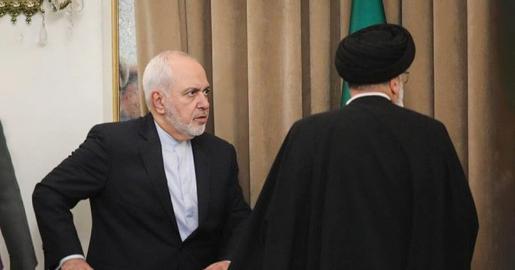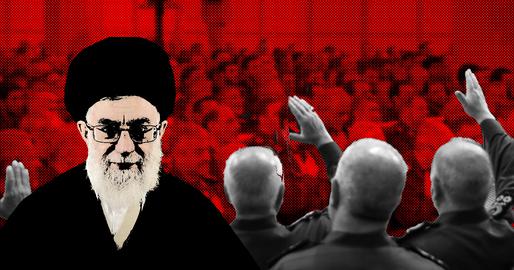Few countries are as important to Iran’s place in the world as China. In 1979, Iran and China seemed made for each other. Both were post-revolutionary, ideologically inspired, non-aligned states resentful of superpowers. They had historical ties, but no history of quarrels. Much of the world condemned Iran, while China was a non-judgmental emerging power, willing to provide diplomatic shelter. Iran had natural resources for which China grew ever more hungry. But in recent years the relationship has begun to show its limits: Iran’s political opposition laments Chinese support for the government, China has sided with the international community over Iran’s nuclear program, and in the economic sphere, China is the only clear winner.
1. Ancient Persia knew ancient China.
The Persian and Chinese empires encountered each other in 139 BCE, and developed trade routes along the Silk Road. Large numbers of Persians settled as far east as Guangzhou and Hanoi (which was then a Chinese outpost). In the 6th and 7th centuries, Persians influenced China by importing Zoroastrianism and Manichaeism. Under the Tang Dynasty (618-907 AD) the Chinese took inspiration from Persian poetry, cooking, and started playing polo. From the 13th century, the two cultures exchanged scientific knowledge such as Chinese astronomical learning and Persian medicine. The two cultures never clashed, and Chinese and Iranian rulers continually refer to this happy history.
2. China apologized to the Islamic Republic for dealing with the Shah.
China’s communist revolution of 1949 placed it in the opposite side of the Cold War divide from the Pahlavi monarchy. Iran, in line with US wishes, opposed China’s admission to the United Nations, and distanced itself from China. But following China’s split with the Soviet Union in the 1960s and US President Richard Nixon’s diplomatic outreach to China in 1972, says Manochehr Dorraj of Texas Christian University, China emerged from its ideological phase, and sought bilateral ties throughout the Third World. China’s late coming to relations with the Shah proved embarrassing: in 1978, Dorraj says, Chinese premier Hua Guofeng visited the Shah and expressed support for him, but later apologized to the Islamic Republic for dealing with the Shah.
3. China sold weapons to both sides in the Iran-Iraq War.
When Iraq invaded Iran in September 1980, Iran found itself desperate for arms. China became an important source of weaponry, although its leaders, wary of offending its Arab allies, sometimes used North Korea as a conduit through which to disguise shipments. Although China assisted Iran militarily during the Iran-Iraq War, Dorraj says, it did not favor it over Iraq. “China sold weapons to both sides and proclaimed itself to be neutral because China needed the energy resources of both countries and the market of both sides. China used its policy of ‘offend no one,’ ‘no intervention in internal matters,’ ‘respecting the right to sovereignty,’ as justification.”
4. Rafsanjani’s “Eastern strategy” made Iran reliant on Russia and China.
At the outset of the Islamic Revolution, Ruhollah Khomeini adopted the slogan “Neither East nor West” to distance Iran from Cold War superpowers. When he died, Dorraj says, President Akbar Hashemi Rafsanjani abandoned the notion because he said isolation had cost Iran a victory over Iraq. Rafsanjani sought normalized relations abroad but, rebuffed by western diplomats, developed an ‘Eastern Strategy,’ based on expanded relations with both Russia and China—a strategy that forms the basis for Iran’s close relations with Russia and China today.
5. China needs Iran’s oil and gas.
Chinese Premier Deng Xiaoping’s economic reforms caused Chinese energy needs to escalate from late 1978. As China’s economy began to take off, Dorraj says, it displayed a rate of growth from nine to ten per cent annually and by 1993, its domestic energy production could no longer meet consumption, so it became a net importer of oil and gas. Iran is now China’s number two supplier after Saudi Arabia, which means 47 per cent of Beijing’s oil and gas now comes from the Middle East. By 2030, Dorraj says, experts project that China will be responsible for 70 per cent of global demand or energy, which Iran will be well placed to meet. “Iran, when you combine oil and gas, has the second biggest reserves in the world.”
6. The Green Movement adopted anti-Chinese slogans.
In 2009 popular opposition to President Mahmoud Ahmadinejad’s disputed reelection inspired inversions of old Islamic Republic slogans, with “Death to Russia” and “Death to China” replacing familiar chants against Iran’s Western enemies. The Iranian opposition, Nader says, saw China and Russia as the foreign powers closest to the Ahmadinejad government, and reports at the time indicated that China had provided crowd-control technology, such as armored vehicles and communications monitoring equipment, to Iran. “The fact that both [Iran and China] are relatively authoritarian or non-democratic makes them reliable partners for each other. China would be concerned if Iran becomes more democratic.”
7. Iran has criticized China’s treatment of Uighur Muslims.
In July 2009 ethnic riots in the Chinese city of Urumqi caused the deaths of 150 people, many of them Uighur Muslims objecting to China’s policy of resettling Han Chinese in Muslim-majority Xingjian Province. Iran issued both official and unofficial condemnations: Foreign Minister Manochehr Mottaki expressed support for “the rights of Chinese Muslims,” while Ayatollah Jafar Sobhani said, “In that part of the world, the unprotected Muslims are being mercilessly suppressed by yesterday’s communist China and today’s capitalist China.”
8. Iran resents China’s support for US-led sanctions at the UN.
Iran has long relied on diplomatic support from China—a permanent member of the United Nations Security Council—at the UN. But in 2010 China supported UN resolution 1929 which sanctioned Iran over its nuclear program. China, Nader says, accepted US arguments that Iran’s nuclear program was a major global security concern in part because the US had demonstrated willingness to resolve the matter diplomatically. While China doesn’t necessarily view Iran as a dangerous power, he says, it remains concerned about nuclear proliferation. China has since cooperated with Western sanctions, and has significantly reduced its purchases of Iranian oil. “The Iranian leadership expected closer cooperation,” Nader says. “There was a sense of betrayal there.”
9. China exploits Iran’s isolation.
China has made UN sanctions against Iran’s nuclear program serve it interests. “Sanctions have given them unfettered access to Iranian markets,” Dorraj says. “China negotiated a bit of a waiver with the US, that allowed it to import reduced amounts of Iranian oil.” China then took advantage of sanctions on Iran’s banking sector by putting yen in Chinese bank accounts with which Iran could buy Chinese goods. “The Iranians were not happy about that, but China was the only game in town, so they grudgingly accepted,” he says.
China, he says, remains wary of increased competition from Western nations: “A lot of Iranians are unhappy that China brings its own labor force with it to implement its development projects—and China is involved in fisheries, dam-building projects, subways, roads, cement factories, you name it. Iranian workers don’t get the benefit of Chinese investment.
10. Iranians are tired of lousy Chinese goods.
Iran’s financial isolation and the international sanctions it faces mean that Iran’s sizable and savvy consumer market faces an overabundance of Chinese products, from cheap toys to inferior rice cookers, there is national disappointment in Iran that Chinese wares are often the only choice.
“Many middle class consumers want a wider variety of consumer goods, Dorraj says. If sanctions are lifted, China is going to face competition from all the countries that have been banned from doing business with Iran, so China may not see that scenario as a very welcoming one.”
Quotes from Alireza Nader originally appeared in “China Would be Concerned if Iran Became more Democratic”
visit the accountability section
In this section of Iran Wire, you can contact the officials and launch your campaign for various problems



























comments